Hito Steyerl is a cool cookie. As well as studying film and television in Munich, she gained a PhD in philosophy from the Academy of Fine Arts in Vienna, and her intelligence shines through in every magical frame of her videos. Three are on show at the ICA along with two recorded talks in which she uses words and pictures to spin beguiling tales that – part fact, part fancy – operate in the space between lecture and performance.
Water permeates every pixel of her latest video, Liquidity (main picture and below right) which follows the fortunes of financier Jacob Wood. After losing his job in the last banking crisis, he switched careers to become a kick-boxing commentator. This was not the first time his life had been totally changed by events beyond his control; he was one of many Vietnamese infants shipped to the United States for adoption at the outbreak of the Vietnam war.
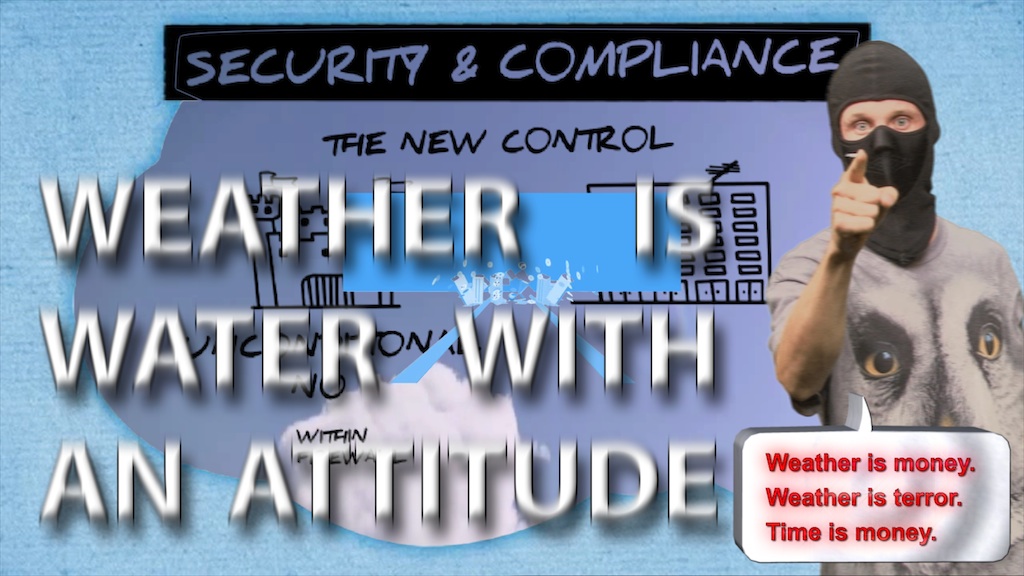 While he tells his story, behind him we see waves crashing against the pilings of a pier, relentlessly undermining the footings – an obvious yet potent symbol of the hazards that threaten the stability of daily life. And Liquidity also contains dramatic footage of the gales, hurricanes and vicious storms that are now becoming horribly familiar. Far less obvious is Steyerl's use of water as a metaphor for the fluidity that enables one to survive the slings and arrows of outrageous fortune; cue euphoric shots of surfers riding gargantuan breakers. “Be water, my friend”, says the voice-over as we watch kick boxers training in a gym. Dancing from side to side in each other's arms, they learn to stay alert and keep continually on the move: “You never want to be frozen; keep liquid. Be formless, shapeless – like water”, says the voice.
While he tells his story, behind him we see waves crashing against the pilings of a pier, relentlessly undermining the footings – an obvious yet potent symbol of the hazards that threaten the stability of daily life. And Liquidity also contains dramatic footage of the gales, hurricanes and vicious storms that are now becoming horribly familiar. Far less obvious is Steyerl's use of water as a metaphor for the fluidity that enables one to survive the slings and arrows of outrageous fortune; cue euphoric shots of surfers riding gargantuan breakers. “Be water, my friend”, says the voice-over as we watch kick boxers training in a gym. Dancing from side to side in each other's arms, they learn to stay alert and keep continually on the move: “You never want to be frozen; keep liquid. Be formless, shapeless – like water”, says the voice.
Steyerl follows her own advice and manipulates her material with fluency and grace. Information accrues in a deliciously playful game of “now you see it, now it’s different”, as shifts in scale and context alter one’s perceptions. Images warp, flow, multiply and mutate as they hop between iphone, computer, TV monitor and large screen projection. Typically, a television ad for google glass is watched by a boxer, who is being filmed limbering up for a bout.
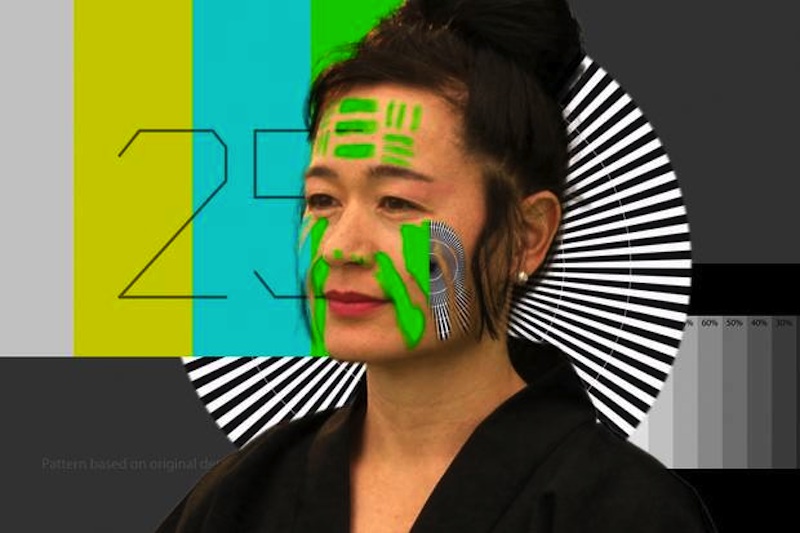 Liquidity is no ordinary documentary then, but a surreal meditation on the relationship between weather, water, commerce and capital. A forecaster stands in front of a map of the world showing the direction of the trade winds; dressed like a deranged terrorist in an owl print T-shirt and balaclava, he repeats the mantra: “The weather originates from you. Weather is water, weather is time, weather is money ... Money is fluid; if you have liquidity you are in control.” The argument is slippery, fast moving and fluid – just like water.
Liquidity is no ordinary documentary then, but a surreal meditation on the relationship between weather, water, commerce and capital. A forecaster stands in front of a map of the world showing the direction of the trade winds; dressed like a deranged terrorist in an owl print T-shirt and balaclava, he repeats the mantra: “The weather originates from you. Weather is water, weather is time, weather is money ... Money is fluid; if you have liquidity you are in control.” The argument is slippery, fast moving and fluid – just like water.
How Not to Be Seen: A Fucking Didactic Educational .MOV File, 2013 (pictured above left and below) was filmed on a patch of crumbling tarmac laid by the U.S military over the sands of the California desert. The abstract patterns of this resolution target enabled reconnaissance aircraft to measure the visibility of things observed from the air. But by 2006, it had become obsolete and was decommissioned, which makes it the perfect spot to film a video about the topic obsessing everyone since Edward Snowden revealed the truly global extent of surveillance – finding ways to hide from prying eyes.
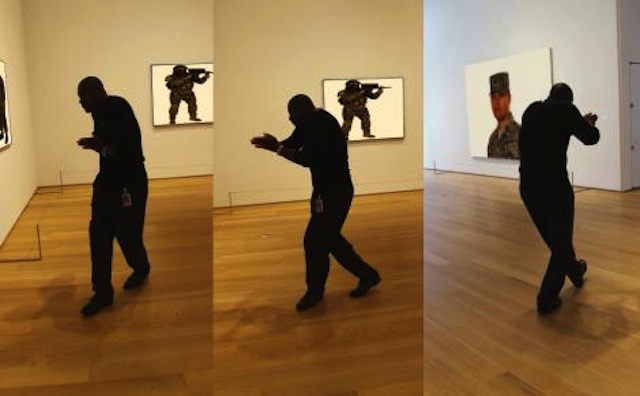 The video starts frivolously, but soon acquires a sharper edge. Steyerl advises the use of make-up and camouflage to make yourself invisible, before switching to the topic of the “disappeared” and comparing the elimination of people from the real world to the shrinking, editing and erasure of data in the virtual one. The stark message is delivered in sombre tones reminiscent of the news reader John Humphrys. With its surreal visuals and black humour, it's like a public information film made by a psychopath.
The video starts frivolously, but soon acquires a sharper edge. Steyerl advises the use of make-up and camouflage to make yourself invisible, before switching to the topic of the “disappeared” and comparing the elimination of people from the real world to the shrinking, editing and erasure of data in the virtual one. The stark message is delivered in sombre tones reminiscent of the news reader John Humphrys. With its surreal visuals and black humour, it's like a public information film made by a psychopath.
Guards, 2012 (pictured above right) is more prosaic, but no less disconcerting. Because of the escalating value of their collections, museums are perceived as soft targets for criminals and malcontents. The old codger snoozing in a corner is a thing of the past. American galleries are now patrolled by ex police officers and marines. This means a shift in priorities; demonstrating how they would deal with intruders, security staff at the Art Institute of Chicago explain that, when it comes to safety, art works take precedence over people.
In her talk Is the Museum a Battlefield, 2013, the artist makes an oblique foray into the relationship between museums and arms manufacturers. She visits a battlefield in northern Iraq, then traces the bullets she finds there back to their points of origin and discovers on the way that firms like Siemens, Vestel and Ayesas are cosying up to cultural institutions.
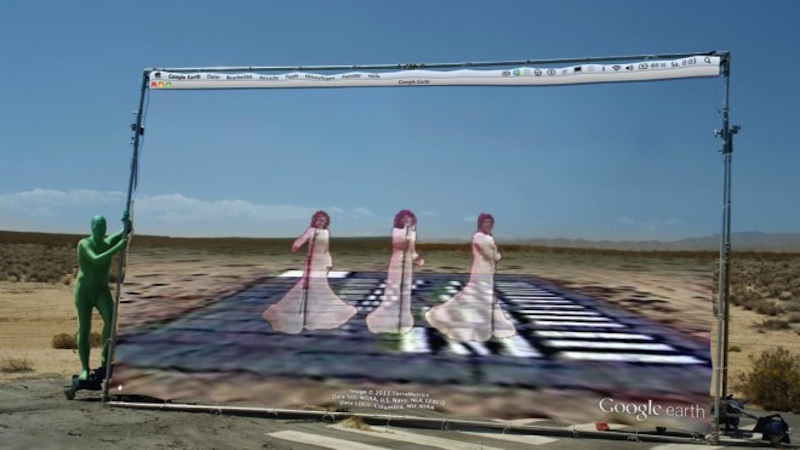 Whistleblowers like Snowden may be forced into hiding, but cultural commentators like Hito Steyerl are not perceived as enough of a threat to be worth silencing, which makes her satirical observations all the more important. Knowledge is power, they say, and Steyerl’s talks and videos help to unravel the freakishly complex web of information in which we are caught. Black comedy is surely the only sane way to approach the subject.
Whistleblowers like Snowden may be forced into hiding, but cultural commentators like Hito Steyerl are not perceived as enough of a threat to be worth silencing, which makes her satirical observations all the more important. Knowledge is power, they say, and Steyerl’s talks and videos help to unravel the freakishly complex web of information in which we are caught. Black comedy is surely the only sane way to approach the subject.

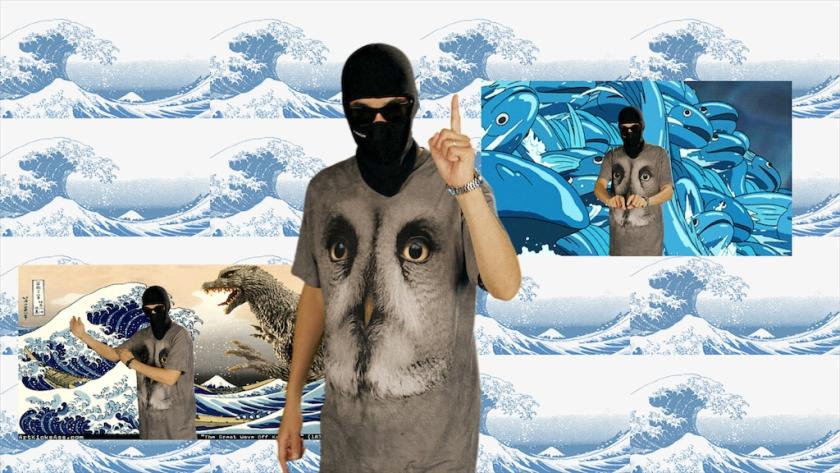







![SEX MONEY RACE RELIGION [2016] by Gilbert and George. Installation shot of Gilbert & George 21ST CENTURY PICTURES Hayward Gallery](/sites/default/files/styles/thumbnail_125_x_125_/public/mastimages/Gilbert%20%26%20George_%2021ST%20CENTURY%20PICTURES.%20SEX%20MONEY%20RACE%20RELIGION%20%5B2016%5D.%20Photo_%20Mark%20Blower.%20Courtesy%20of%20the%20Gilbert%20%26%20George%20and%20the%20Hayward%20Gallery._0.jpg?itok=3oW-Y84i)





Add comment